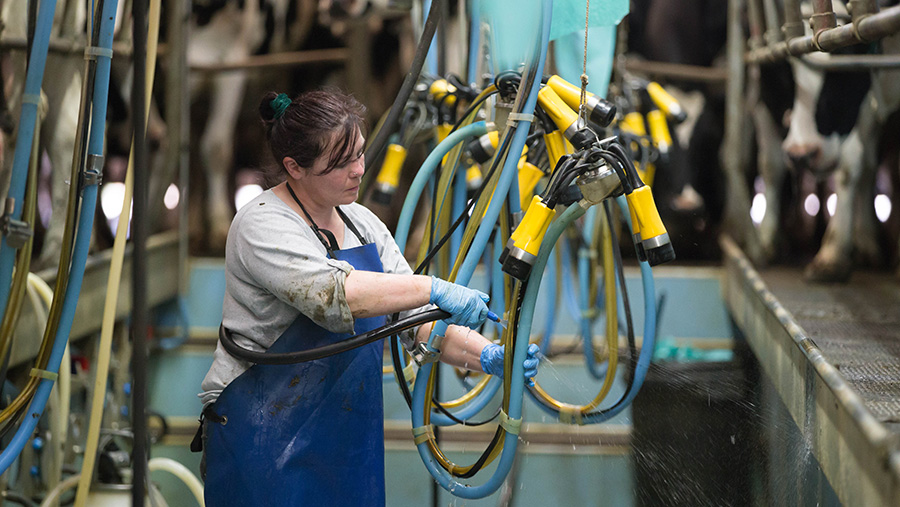Editor’s view: Dairy decisions loom as price cuts arrive
 © Tim Scrivener
© Tim Scrivener It was brilliant news for swathes of dairy farmers this week as the labour crisis afflicting the sector was briefly solved as teachers went on strike and children were stranded at home at the mercy of their hardworking parents.
Tiktok addicts were reportedly braced at the time of going to press for a tidal wave of parlour-related content.
Helpless cows also had to somehow find a way to let down milk despite the Bluetooth speaker being diverted from the soothing sounds of the Farmers Weekly podcast to Doja Cat, Miley Cyrus and Meghan Trainor.
See also: Editor’s view: No longer possible to say ELM is a mystery
(For the benefit of the Health and Safety Executive, all children were of course adequately supervised in the working environment. Some adults even reluctantly attempted a viral dance when it was safe to do so.)
The reality is, of course, that the biggest story for our milk-minded readership this week is the succession of price cuts hitting the sector.
An uptick of labour will also likely be needed at livestock markets soon as farmers reassess what the threshold for culling is, and make some other quick decisions about how much to throttle back production.
While there has been a bit of griping in some quarters, there is mostly a weary recognition that what goes up must come down.
The key will be where this ends up bottoming out, and it is essential that the process is managed carefully.
If you credit price rises for first maintaining and then growing supply, it follows that price cuts that are too deep or too fast risk rapid production cuts.
This then quickly leads to the sort of supply shortages that have already affected the availability of eggs and other produce, benefiting no one.
But even as farmers rightly point out that input inflation, not profiteering, has driven necessary increases in farmgate prices, it is important to acknowledge that many shoppers are not in a good place.
Consumer sentiment surveys, such as those conducted monthly by market intelligence company GfK, reveal that confidence in the economy remains at near-record lows, constraining spending.
And with another rise in interest rates likely by the time this is published, budgets, even for staples, are still under severe pressure for many families.
This is borne out by food-specific research, such as the survey results published by YouGov and Red Tractor this week, that shows shoppers are targeting food as an area where they can cut spending.
It revealed 27% of families with children under 12 are buying less meat and 18% are buying fewer fruits and vegetables due to the cost-of-living crisis.
The regular sight of household staples such as butter and cheese swaddled in the sort of security tags normally reserved for booze is another sobering reminder of the scale of the problem.
Wherever there is a problem, there’s a politician wondering if they can insert themselves into the situation and gain credit for solving it.
This will be precisely the calculation that international trade secretary Kemi Badenoch is mulling now as she participates in the final negotiations for the UK’s entry into the Comprehensive and Progressive Agreement for Trans-Pacific Partnership.
Former Defra secretary George Eustice warns that this could compromise the UK’s ban on hormone-treated beef, opening up our market to the 40% of Australian beef produced in this way that does not currently have access.
The race to the bottom on nutrition suits no one, but the solution is not to further undermine domestic production in pursuit of cheaper prices.

